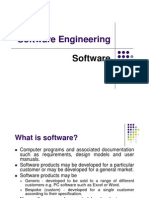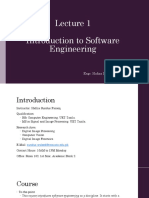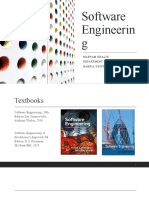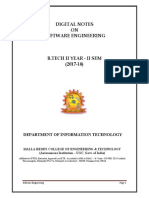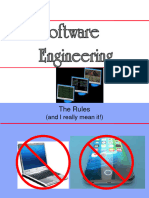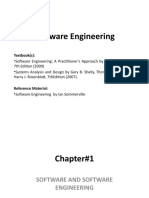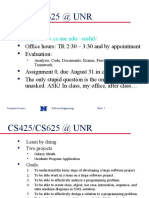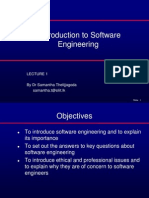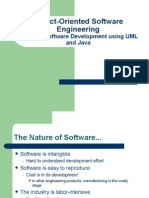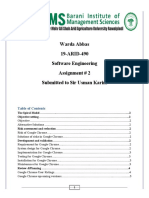0% found this document useful (0 votes)
51 views24 pagesLect 1 Intro
This document provides an introduction to software engineering. It defines software as computer programs and documentation. It also discusses the different components of software including programs, data, and documentation. The document outlines different types of software such as custom, generic, real-time, and data processing software. It defines software engineering and compares it to computer science. Key aspects of software engineering frameworks, processes, methods, CASE tools, attributes of good software, and challenges are summarized.
Uploaded by
bint e zainabCopyright
© © All Rights Reserved
We take content rights seriously. If you suspect this is your content, claim it here.
Available Formats
Download as PPTX, PDF, TXT or read online on Scribd
0% found this document useful (0 votes)
51 views24 pagesLect 1 Intro
This document provides an introduction to software engineering. It defines software as computer programs and documentation. It also discusses the different components of software including programs, data, and documentation. The document outlines different types of software such as custom, generic, real-time, and data processing software. It defines software engineering and compares it to computer science. Key aspects of software engineering frameworks, processes, methods, CASE tools, attributes of good software, and challenges are summarized.
Uploaded by
bint e zainabCopyright
© © All Rights Reserved
We take content rights seriously. If you suspect this is your content, claim it here.
Available Formats
Download as PPTX, PDF, TXT or read online on Scribd
/ 24



